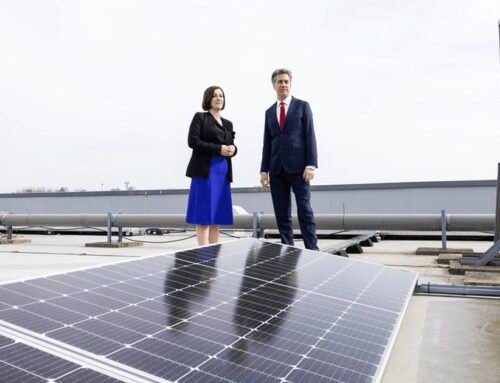Indian family offices now go beyond investing for HNIs and are involved in legacy planning
June 29, 2025
Q.What’s the one financial habit every young investor should adopt early?
The art and science of saving!
Q.What’s your biggest investing superstition that you know is totally irrational?
That the markets generally fall in October.
Q.How do you unwind after a volatile market day?
Markets don’t move in a straight line, they are inherently volatile. It really doesn’t bother me.
Q.What’s one investing myth you wish more people would stop believing?
Real estate investmentin India is better than equities.
Q.You’re stranded with only three stocks for 10 years, which ones you’ll choose?
I am bullish on theBFSI sectorin India as I understand that better than other businesses so all my stock picks will be from this sector.
Q.Which global market or economy fascinates you the most right now, and why?
I believe in the India growth story.
Q.What’s more dangerous to your returns – a business TV news channel or Twitter?
WhatsApp University is the most dangerous!
Wealth creation and preservation is not just an aspiration for the common man and woman. The rich and the famous also want to see their money grow. But more importantly, they’d like their wealth and legacy being passed on to future generations. A report by wealth management firm Julius Baer, in association with EY, estimates that US$ 1.5 trillion is expected to change hands in India over the next decade. A large chunk of this wealth sits in family offices—the “money box” of affluent families—run with a strict constitution designed to grow the capital and pass it to future generations, alongside any mandates for charity or other causes. The Julius Baer-EY report titled ‘The Indian family office playbook–June 2025’ gives us an insight into the world of family offices, trends in their investment preferences, their risktaking abilities, succession planning and so on. Excerpts from the conversation with Umang Papneja, CEO, Julius Baer India:
Talking about the growth of family offices in India, the report says that they have grown to 300 in 2024, up from 45 in 2018. Tell us how they have changed over the years.
The amount of wealth creation in India is unparalleled. India is at number three, just behind US and China in terms of new people being added to the ultra high-networth individual (UHNI) list. A report says that around three individuals get added in the $30 million plus bracket every day in India.
These are the kinds of additions we’re seeing to the elite club. Wealth managers and multi-family offices are targeting 1,000 new clients annually, and over the next five years, another 5,000 individuals are expected to join—each with an investable surplus of $30 million (Rs.250 crore). No wonder we have seen the number of family offices swell from 45 to 300.
Now people don’t only want to manage and grow the money in terms of asset allocation and product selection. International investing and philanthropy too are on their aspiration list. The focus is also on how to preserve and sustain this level of wealth for future generations—two or even three down the line. That’s the mindset change. I won’t be surprised if there’s an exponential increase in the number of family offices over the next four- five years.
Today’s tech-savvy, first-time entrepreneurs are driving new wealth creation—but is it substantial enough to justify setting up family offices already?
Say, a new-generation entrepreneur has launched an IPO and sold part of their stake through an offer for sale, or brought in a private equity investor. With this liquidity, the entrepreneur can now consider setting up a family office.
Risk-taking among family offices has gone up over the years, as per your report. What does that mean for generational wealth?
Firstly, age has got nothing to do with this. The perception that senior people do not like risk and only youngsters do, is a misconception. That’s because the patriarch, even if he is 75 years old, knows that he is not just saving the money for himself. The wealth is for the next generations as well. Why should he be conservative in his choice of investments and wealth creation? He obviously thinks about growing and compounding as well, so that his future generations are taken care of. Family offices work way beyond goals like retirement planning. They think about preserving and compounding wealth for future generations; it’s a growth mindset at play here.
When new-age family offices are set up, do you see them taking on more risks with their investments, as opposed to the traditional ones?
Family offices invest in traditional products like listed equities, fixed income products, and so on. But new generation entrepreneurs also want to give back to the community where they come from.
For instance, if a startup founder had a successful exit and there was an ecosystem which supported him, he would want to give something back to the system. For instance, say 4-5% of his wealth may go towards a startup founded by peers in his cohort. We see a lot of that in the technology sector landscape. The new age family offices might give something away to startups, but that’s not the case always, with legacy ones.
Is there something like ‘enough’ wealth for a family office or a threshold beyond which growth becomes inconsequential and preservation take precedence?
It depends from family to family. Typically, and irrespective of how many goals a family office would have, its investment agenda has three sides to it. First is safety. Second, growth investments. And, third, aspiration or the risk-taking ability.
Now each family might allocate different proportions to this. Some might not want any safety element in the way they manage their money. A family office might say it needs to earmark a certain amount or a certain percentage of the overall corpus, in the safety basket, which will only invest in risk-free or least risky instruments, and so on. But all of this is laid out in the family office’s constitution at a broader level and more specifically, in their investment policy statement.
The report talks about how alternate investments like private equity and private credit are also investment choices of more family offices increasingly. What drives them to these risky investments? Do they still invest in mutual funds?
Of course, they still invest in mutual funds. That’s the bread and butter. But they also aspire to grow their wealth. And the buckets that I just explained, also has a risk bucket in the midst. Most family offices restrict investments in alternate assets to around 10% of their overall corpus. There are growing opportunities in the private equity space—especially as government spending rises in sectors like manufacturing and defence. Many new companies are emerging in these areas, but they are still in the early growth stages and not yet listed. Savvy and smart investors like family offices might not want to wait till they get listed to make money out of them. For example, as iPhones get locally-made, they might turn to small local companies to supply parts. Some of these companies can provide tremendous growth opportunities, especially since they get access to them at early stages.
The only thing to remember here is that liquidity in unlisted companies and private equity is very low. Hence, most family offices prefer to restrict their investments in alternate assets to under 10%.
Why is succession planning important and pivotal for family offices?
Patriarchs and matriarchs would certainly like to decide how the next generation takes over. Without a plan, it can become emotional or even create friction. It gets even more complex in larger families. Nearly 60% of family offices take succession planning head on. It’s important. In our experience, families that plan early, tend to transition more smoothly.
As per your report, 59% of family offices have adopted the approach of making wills and family agreements, and 19% prefer trusts. Why are trusts chosen over wills?
A trust is perpetual. If assets are transferred to a trust, the trustees will transfer assets to the next generation exactly as per the wishes of the person who has made the trust. It becomes automatic and more longterm. A trust deed ensures that assets can be distributed for long enough, to as many beneficiaries as the trust deed mentions and over a long time. It gives you enough number of permutation and combinations and works well for families with complex assets or if the members are spread across geographies. A will, on the other hand, needs to be executed immediately upon the person’s death.
What happens when a branch of a joint family wants to go its own way—whether in managing its wealth differently or stepping away from the family business? Is this becoming a challenge?
Yes, this is something we are seeing more often. Younger family members may want to follow different careers or investment paths. In such cases, having a family office structure helps, because it gives them a way to manage their share of wealth and income separately, but still with some family oversight. It also allows families to stay connected through shared values, while giving freedom for individual choices. It’s not always easy, but the right governance structure and family oversight helps.
The report says that family offices and UHNIs diversify among real assets like REITs and InvITs. What drives family offices towards them?
Family offices are increasingly investing in real assets because they offer stable, long-term income. These are not linked to market ups and downs in the same way as equities. REITs and InvITs, for example, give them exposure to assets like commercial buildings, roads, warehousing or data centres, these spaces are leased under long-term contracts, creating stable monthly income for investors. This investment class brings in regular cash flows, which suits families looking for steady returns without taking on too much risk.
What do you make of the current market situation? How should investors react in terms of opportunities, or should they be cautious?
India remains a strong long-term story. Even with the current global tensions, we’ve seen that domestic liquidity is high, and that has helped markets stay steady. A few years ago, we may have seen sharper corrections, but that’s not the case today. We continue to be positive on India’s fundamentals. Sectors like banking, infrastructure, renewables and manufacturing are all seeing good momentum. So while it’s important to stay balanced, this is also the time to look for the right opportunities with a long-term lens.
Search
RECENT PRESS RELEASES
Related Post



